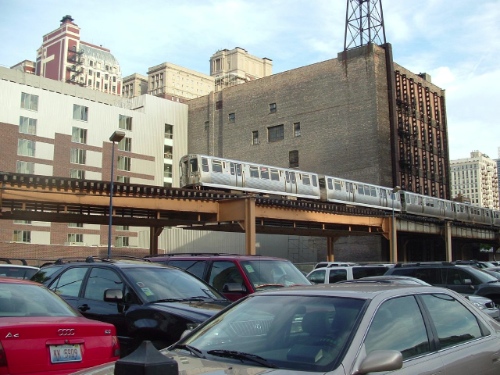Does the increased availability of public transportation options drive gentrification in neighborhoods, attracting people who will not take advantage of said transportation options? That’s the suggestion made by a new study from Northeastern University’s Dukakis Center by Stephanie Pollack and Barry Bluestone.Yonah Freemark at The Next American City explains, “new rail stations may be gentrifying neighborhoods to an extent that the people most likely to take advantage of transit services are being pushed out, forced to relocate because of higher prices.”

Photo by celikins on Flickr
Studying 42 neighborhoods with new transit stations in 12 metros, Pollack and Bluestone found that 64% of new transit neighborhoods saw higher population growth than the region as a whole, 74% saw a larger increase in rent, and 71% saw a larger increase in automobile ownership. Freemark notes, “of the neighborhoods studied, 57% saw a larger increase in public transportation use than the metropolitan area…Troublesomely, however, 40% of the station areas had less of an increase in transit use than their respective regions. Is that a reflection of the changing demographics of the neighborhood?”
It is a troubling suggestion, though it should be noted that while convenient public transit options may attract higher-wage-earning drivers, for people entrenched in the commuter mentality, transitioning from cars to public transportation can be daunting. Public transportation options may appeal to these drivers in concept, but not necessarily in practice. The improved accessibility of public transportation options can’t be the only compelling reason for drivers to switch. We remain a car-dominated culture, and many drivers need compelling (and practical) reasons. Oftentimes, drivers come to public transportation due to increasing gas prices, but there are plenty of other good reasons to ditch the car: the cost of vehicle upkeep, safety, beating the traffic, and other conveniences rapid transit provide.
The trends demonstrated in this study do not represent an immutable law. The appeal of public transportation options to these drivers represents a promising start. But they may still consider driving into the office to be more convenient, and the right sales pitch is still needed to convince them to take the leap and transform their daily commute.









